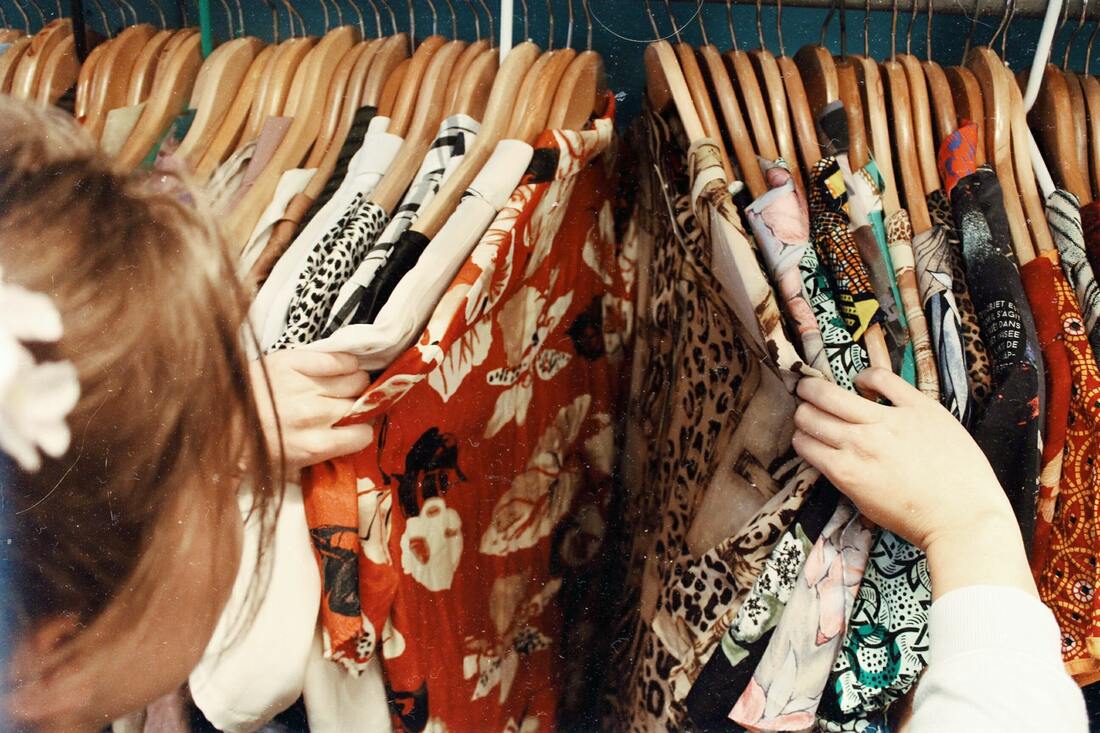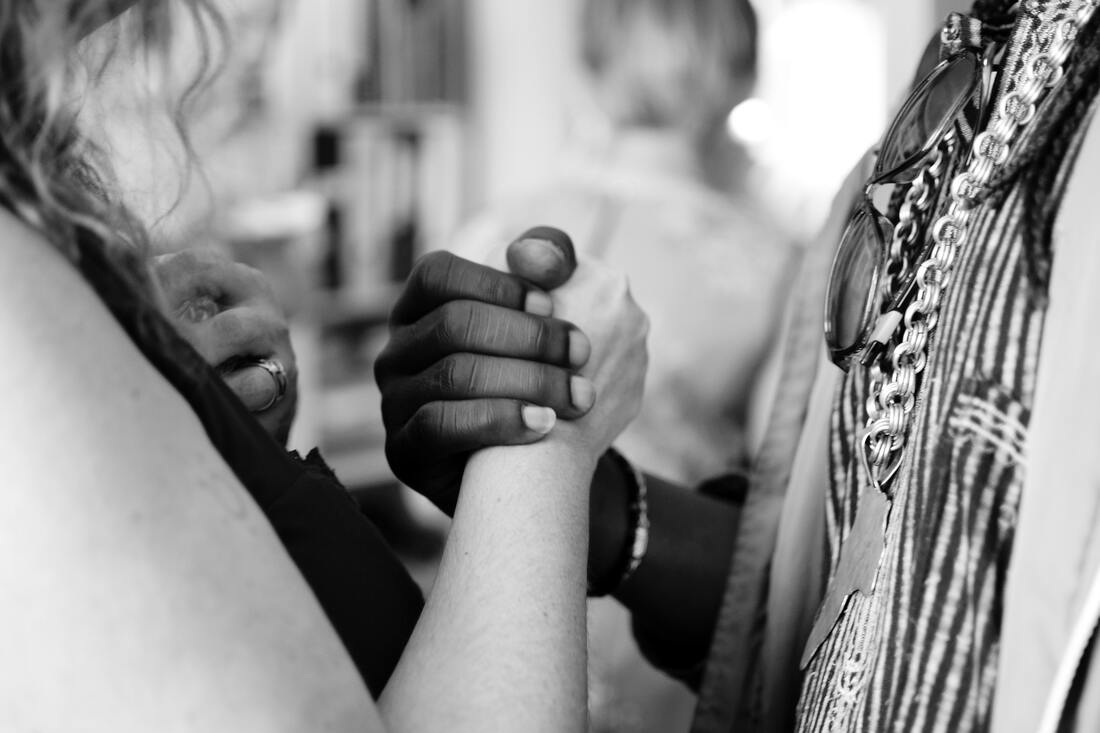|
I'm excited to share a letter about commitment to recovery that I drafted for a client. I hope it encourages you or your loved to stick with the challenging journey of healing. Today, I commit myself to me, to my recovery, to my values, and to sharing my journey with others. Recovery is perhaps the most difficult thing a person can do. It has not been easy. There have been struggles, and sometimes, it feels like I am hacking a path through a jungle and having to trust that I’ll find my way. My journey is my own to travel. I am also grateful for those who have walked with me along the way, picked me up when I needed it, and sat with me and provided comfort when I felt like I didn’t have the strength to keep going. I am learning that I don’t need to be perfect, that I can practice acceptance and compassion for myself and others, that the most important thing I can do when I stumble is to get up and try again, committing myself to who and what is important to me. I recognize that there will be times when the old stories that I tell myself will get in the way. I may react to rather than respond to how I’m feeling. Still, I can practice giving myself space in between difficult feelings, thoughts, and memories and choose how I want to direct my actions. I also commit myself to allowing joy, love, and celebration. I will let my heart–even though it is repairing–be open to all the experiences I cultivate and witness, knowing that, in doing so, I will continue to gain strength and let go of suffering. In honor of those who came before me, those who are with me now, and those who will come after me, I commit to continue my journey of recovery. For a downloadable version of this letter, click here. Eight thoughtful tips for a formidable task during your recovery journey When you are in eating disorder recovery, nothing may feel more daunting than clothes shopping. Even if your body has not been changing, the experience of looking through the racks of clothes, getting upset by size tags, navigating the dressing room, and talking with salespersons can be trigger central!
Most salespersons are not educated about eating disorders and size inclusivity and may focus on helping people find items that make you look “thinner and slimmer.” Additionally, they may try to upsell more expensive merchandise. Persons with eating disorders often have a fear of using resources on themselves, so the idea of spending money on oneself may also lead to a resistance factor to buying new clothes. When this necessary task looms on the horizon for you or your loved one, the pull of avoidance can be strong. Some may even reconsider important plans in order to circumvent the enormous chore of trying on clothes. Why Clothes Matters Feeling comfortable and relaxed in clothing is crucial when you struggle with body dissatisfaction. Clothes that don’t fit right draw attention to the body and can ramp up discomfort and anxiety, leading to eating disorder behaviors in an effort to assuage those unwanted feelings. Some persons also like to “hide” in larger clothing as a solution to not feeling like they can “look good” in anything. In addition, persons with eating disorders may hoard “sick clothes” in their closets in an attempt to hang on to the false hope that dieting, disordered eating behaviors, or thin-focused thinking gave them. So how can you make clothes shopping a more comfortable, enjoyable experience? Here are eight tips to consider for your next outing: 1. Focus on the fitting rooms. If possible, choose a department store with fitting rooms that have soft lighting (instead of glaring fluorescents), a three-way mirror, and a large enough changing space for you to easily move around. 2. Bring a supportive family member or friend with you. Instead of using the salesperson for help with finding garments, bring a person who you trust to help you navigate the experience. Additionally, there may be a few professional shoppers here and there who have experience with eating disorders. If you can find one, interview them before you go shopping and assess your comfort level with this person’s knowledge about eating disorder recovery. 3. Let your shopping buddy focus on sizes. Show them the garments you like and ask them to sift through the racks for the correct sizes. They should grab two or three different sizes of the same garment for you to try on to ensure that you find one that works. Remember that sizes are not standard and often depend on the brand or country of manufacture. 4. Ask your family member or friend to come into the dressing room with you. When you are in the stall, turn your back to the stall mirror and resist looking into that mirror. Mirrors in the stalls are often lower-end and not flattering. They can be warped or poorly lit. Have your supportive other give you one item at a time to try on. Resist looking at the size tag. While trying on the garment, if it feels like it doesn’t fit, stop right there and give the garment back to your supportive other. Send them to find a different size if needed. If the garment fits and you think you may like it, walk out of the stall to view it in the three-way mirror. Those mirrors are often higher quality and have better lighting. Plus, if you feel confident enough to leave the stall to view it, it is a good sign that you may have found something you like! More Tips For Clothes Shopping 5. Have your supportive other cut the size tag off your garments immediately after purchase. Bring some scissors with you! You can also bring a waterproof black marker to cross out the size if you want to save the tag for washing instructions. 6. Look for clothes with stretch. Because your body will adjust to regular nutrition during your recovery journey, please don’t expect clothes to fit the same as they did before. If you are in the process of interrupting eating disorder behaviors and adjusting to a regular meal plan, it is best to find clothing with stretch to give your body room to flow in and out of the adjustments it needs to make. Opt for loose fitting or stretchy pants rather than snug denim or tight waist bands. If appropriate, consider getting fitted for a new bra or focus on undergarments that have stretch. Nothing is more uncomfortable than ill-fitting underwear! Items that allow room in the midsection are preferred too. Tunics, button-down shirts, linen tops, flared shirts, and blouses may be good options to try over fitted tees and sweaters. Don’t forget comfortable shoes too. Tight shoes, boots, or heels with no give for the feet are not worth the agony! 7. Focus on staple items that can be mixed and matched in neutral colors. If you want to add some flair, you can accessorize. 8. Get rid of “sick clothes” and other items in your closet that remind you of eating disorder days. I strongly recommend that you enlist your supportive other to help you clean out your closet. Box up the sick clothes and anything else that you haven’t worn in the last year. Consider donating them to a local shelter or charity. Please do not give these clothes to family members or friends. It can be too triggering to see them on others! A note for supportive others: You should include the recovering person in the discussion of this process. Unless directed by your recovering person or their treatment team, do not secretly go into the room and rid them of their sick clothes. This task is an important opportunity for therapeutic healing during eating disorder recovery. Shopping on a Budget Before I close, I want to share a few additional tips focused on shopping on a budget. These thoughts are shared with gratitude from a discussion in The Eating Disorder Foundation’s 50+ Virtual Support Group.
Now that you’ve got some guardrails in place, it’s time to pick a store, find your supportive other, and set a date to shop! Know that it will be hard. It may bring up unwanted thoughts and emotions. But remember: You are incredibly resilient. Lean into finding clothing that is comfortable and expresses your unique style and creativity to bring you forward in your new recovery identity. You can do this! Check out my website or reach out to me via my contact page. I offer free, 30-minute consultations to new clients. As we pay special attention to eating disorders during National Eating Disorders Awareness Week (NEDAwareness Week), I’ve been reflecting on this year’s theme, See the Change, Be the Change. I firmly believe that it takes a village to support someone with an eating disorder in their efforts to change and that, within that village, it is also important to pay attention to our own willingness to change.
Eating Disorder Recovery During the Pandemic This idea has been especially true during the pandemic. Even when the individual is wanting to change and move towards recovery, there may be difficulty in finding providers taking new clients, spots in treatment programs, and/or places to receive support in the community. Plus, because an individual with an eating disorder must recover in a diet- and size-focused culture, they are likely dealing with other mental health challenges, such as anxiety, depression, substance use, trauma, OCD, perfectionism, and/or bipolar disorders. These co-occurring conditions challenge their ability to stay focused on the behaviors they want to change. It is crucial, then, for teams and families supporting recovery to also practice flexibility and acceptance during this difficult change process. Three Changes to Support Eating Disorder Recovery I have many years of leadership and practice guiding individuals and their loved ones through the eating disorder recovery process. Given my experience, I want to share a few recommendations for clinicians and families to consider when it comes to changes they can make for the sake of a recovery: 1. Collaborate: It is important that everyone is on the same page, including the recovering individual, when it comes to both the recovery process and the goals, both short-term and long-term. This sort of high-level teamwork is accomplished at treatment centers with a multidisciplinary treatment plan. It can also be done in an outpatient setting by including all providers and family members in the creation of a Wellness Agreement (stay tuned for a blog post focused on this topic!). Having a written document with regular touch points can do wonders in reducing questions about who is supporting what, what’s happening at any given moment, and how difficulties will be faced. Still, it can be a challenging undertaking during recovery, as it requires leadership, coordination, and cooperation from the recovering individual. 2. Reinforce progress and acknowledge struggle: The person recovering is doing an enormous task in recovery. It is beneficial to validate how difficult that work is and to let them know that you understand when they have moments of doubt or hopelessness, struggles, and slips. Together, it’s important to take a longer-range view on their progress. Oftentimes, it is tempting to focus only on the problem points. Instead, though, highlight their successes. Rather than expecting or seeking perfection, help the individual continue to make recovery-focused choices. 3. Allow for the individual to build competence with change: Clinicians and families are often eager to jump in and get to work on all the things they see the individual could change. Sometimes, our timelines are unrealistic though. They may even be about our own fears of looking incompetent if the plan for change isn’t working or going at the pace we’d like to see. For the individual, competence with their own change behaviors is key. The structure of the treatment program or the Family Based Therapy model can help the individual to become medically, psychiatrically, and nutritionally able to build willingness and participation in change by addressing the need for life-saving stabilization. Of course, the process doesn’t stop there. Recovering individuals also need to make the crucial step of walking their bodies through the changes and feeling their own choices. This process can be hard for those of us supporting. Clinicians and families may be tempted to “take over” or “give up” because an individual might regress or slip. During these moments, it may be useful to use the Stoplight Plan for Recovery and check our own expectations. Change usually takes longer than what makes us comfortable. Allowing for some discomfort while preserving our relationship will help the individual to find and feel their own competence with change. I am a proud supporter of NEDAwareness Week. Through my work at Eating Disorder Intervention, I strive to provide hope and support to individuals and their families impacted by eating disorders. Together, let’s see the change and be the change! Check out my website or reach out to me via my contact page. I offer free, 30-minute consultations to new clients. |
AuthorBonnie Brennan shares thoughts, inspiration, skills and resources for recovery Archives
June 2022
Categories
All
|



 RSS Feed
RSS Feed